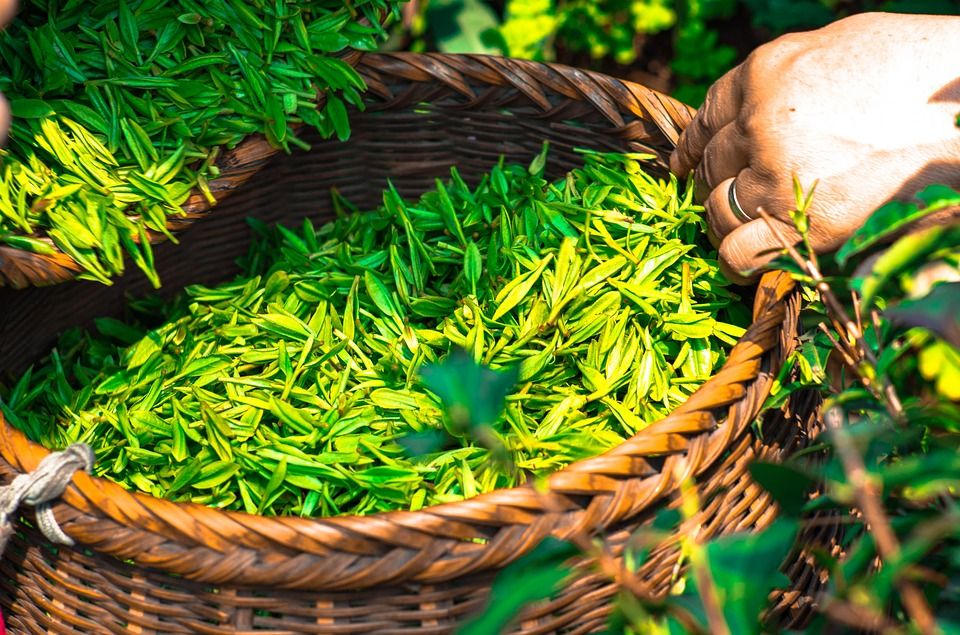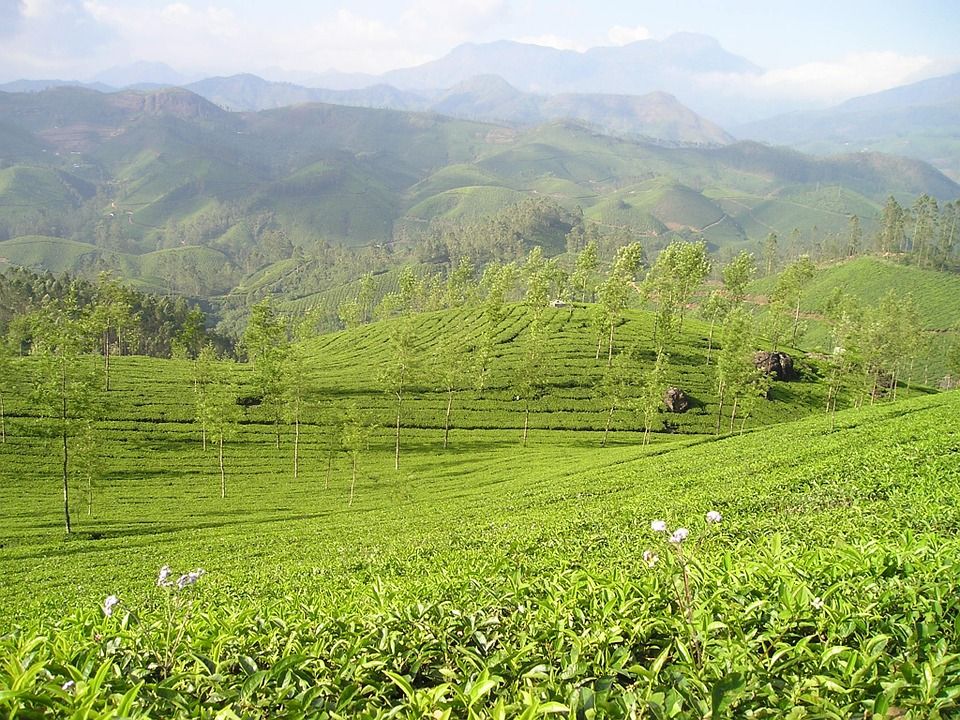For many people, coffee is the go-to drink when they are looking for a hot beverage that can give them energy for the day. But did you know that aside from water, tea is also the most popular beverage in the world and not coffee? In fact, in the United States, tea imports have increased by more than 400% since 1990.
Tea is a very popular drink for thousands of years now. It is believed to have originated in China and was used as a medicinal drink. Then, it spread to the United Kingdom in the 17th century, where it also became popular. With the high demand for tea today, it is understandable that it needs to be produced on a mass scale. This is why it is being produced across the world in varied locations to cater to growing requirements to make different varieties of tea.
If you love drinking tea, have you ever wondered where the majority of the teas are made around the world? If you want to know about it, you’re in the right place. Today, we will give you a list of the places where tea is grown around the world.
China
As mentioned earlier, it is believed that tea originated in China. With that, it can be pretty obvious why China is the largest tea-producing country in the world. In fact, no other country can boast of rich tea-drinking culture that can be dated back to more than 5,000 years ago apart from China. This country can produce more than 2 million tons of tea in a year, which is about 35% of the total amount produced in the world.
According to legends, tea was introduced to China by Shennong in 2737 BCE, who was an emperor and a herbalist. In China, tea has been consumed as everything, from a drink to a medicine. It is also the center of innumerable cultural rituals in the country. Some of the varieties of tea produced in China include green tea, oolong tea, white tea, and jasmine tea, to name a few.
Japan
Japan is also a tea-producing country. It is popularly known for its Sencha and green tea. It can produce more than 80,000 tons of tea in a year. The major harvest in Japan is naturally green tea. It is majorly grown in Shizuoka Prefecture, Miyazaki Prefecture, Kyoto Prefecture, Kagoshima Prefecture, and Fukuoka Prefecture. Among these regions, the most prominent is Shizuoka, where most of the green tea is produced.
According to history, a Buddhist monk from China introduced tea to the Japanese. The people in Japan consume most of the tea they produce, and only 2% is left for export. Some of the varieties of tea produced in Japan are Bancha, Sencha, and Gyokuro.
Bangladesh
Bangladesh has a hot and humid climate, which is perfect for producing tea. There are more than 150 tea plantations in Bangladesh, and most of them are located in the northern and eastern parts of the country. There are over 300,000 people working in these tea plantations. Over the years, tea production in this country has steadily increased. And as tea produced in Bangladesh become more popular across the world, the volume of production is also likely to grow even further.
Myanmar
Myanmar is also a tea-growing country. Even though it was at the forefront of controversy in recent years due to the harmful dye found in the tea they produced, they were able to rise from it with the help of the new generation of organic farming practices. In the past years, tea from Myanmar has been growing in popularity. The majority of the tea grown in Myanmar is grown in the Shan State, which borders China.
Kenya
Kenya is the 3rd largest producer of tea in the world. It has a total tea growing area of 1577 square kilometers. It is also the largest when it comes to exporting tea. Kenya has a low population, which means that its domestic tea consumption is low. In a year, this country can produce more than 400,000 tons and can export more than 400 million kilograms of tea.
This country also has a tropical climate, making it great for growing tea. Some of the most popular tea varieties grown in Kenya are white tea, green tea, black tea, and yellow tea. However, unlike China and India, where tea is produced on a large scale, in Kenya, they produce tea in small plantations. Tea is one of the major cash crops in this country. It is also the leading foreign exchange earner in Kenya.
Vietnam
The growing of tea in Vietnam started in 1880, during the time when the French established the first plantation in Pho Tho. However, there was a decline in tea production due to the Vietnam War. But in recent years, the amount of tea grown in Vietnam is continually increasing.
There are both small scale and large-scale tea growers in Vietnam. Most of the large-scale producers of tea employ state of the art technology in their methods of production, which is capital intensive. On the other hand, small scale tea growers majorly grow artisan teas, including lotus and jasmine teas.
Iran
Growing of tea in Iran began in 1882. It currently has tea plantations covering an area of more than 320 square kilometers, and most of them are located along hillsides. This country can produce around 100,000 tons of tea in a year.
Prince Mohammad Mirza was the father of Iranian Tea. He was also known as Kashef al Saltaneh, the first mayor of Tehran. It was his dream to plant tea in Iran. When the country was colonized by Britain, he was appointed an Iranian ambassador to India. During those times, the East India Company were monitoring tea plantation and production techniques closely and safeguarding the secrets. With the Prince’s determination to learn how tea was grown and processed, he disguised himself as a French laborer and got employed into one of the tea plantations in India.
The Prince even exported seed samples to Iran from India. These were first planted in Gilan, Iran. This was the start of the famous tea growing era in Iran, which continued to grow steadily until today.
Indonesia
In Indonesia, the growing of tea began in 1878 in Java. Indonesia was colonized by the Dutch, who succeeded in growing tea commercially from tea seeds that were imported from Assam gardens. In the 1900s, tea-growing had expanded to Sumatra. In the present time, there are 13 provinces in Indonesia where tea is grown, and these include Sulawesi, Java, and Sumatra.
Indonesia is known to produce quality tea that many tea lovers enjoy. It can produce around 140,000 tons of tea in a year, and most of that is black tea. It also exports about 65% of its domestic tea. However, its brand in the world market is not very popular. In most cases, the tea they produce is mixed and blended with other teas. But Indonesia is the 5th largest tea exporter in the world.
Turkey
Turkey is another tea-growing country, and it can produce around 200,000 tons of tea. Most of it is produced in tea plantations that are located in a region near Rize city. That area has a mild and humid climate, and fertile soil, which is perfect for growing tea. More than 40% of its total produced tea is exported, while the rest is consumed locally. Turkish people love tea, and they consume it at an average rate of 2.5kg per person each year. In fact, there’s a higher rate of tea consumption in Turkey compared to China.
Sri Lanka
Sri Lanka is the fourth major tea-growing country in the world. It is also the second-best biggest player when it comes to exporting tea. In fact, 15% of the country’s revenue comes from tea, making it an essential foreign exchange earner. In 2013, Sri Lanka made a record in tea production when it produced a total of 340 million kilograms of tea. This country majorly produces black tea. Most of the high-quality tea produced in Sri Lanka is grown in central highlands. The weather there is ideal for tea growing, as they have decent humidity, precipitation, and temperatures.
India
India is the 2nd biggest tea-growing country in the world. It can produce more than 1 million tons of tea in a year. India consumes most of its tea locally, with its billion-plus population. It means that there’s little tea left for export. With this, India is on the fourth spot when it comes to exporting tea in the world market. Most of the tea produced in India is black tea. Some of the popular brand varieties of tea produced here are Darjeeling, Nilgiri, Assam, and Kangra.
Argentina
Argentina is the 10th largest grower of tea in the world. It can produce around 80,000 tons of tea in a year. This country has a sub-tropical climate that is perfect for growing different variants of tea. Black tea is the major kind of tea that is grown in Argentina, and most of it is grown in high elevation areas of North Eastern provinces of Misiones and Corrientes. These places have a high humid and hot climate, making it suitable for tea plants to thrive.
The tea plantations in Argentina are located in lands that have relatively flat topography. This makes it possible for them to use heavy machinery to harvest and as well as process tea. Between November and May is the peak season for tea harvesting in this country.
These are some of the places where tea is grown around the world. When trying out different varieties of tea from different places in the world, it can also be a great experience if you use the right teaware that can help in bringing out their original taste and flavor. You can use traditional ones like Chinese teacups and Yixing teacups, and see how you fall in love with your tea every day. We hope the information we shared here helped you in understanding where tea is grown around the world.


